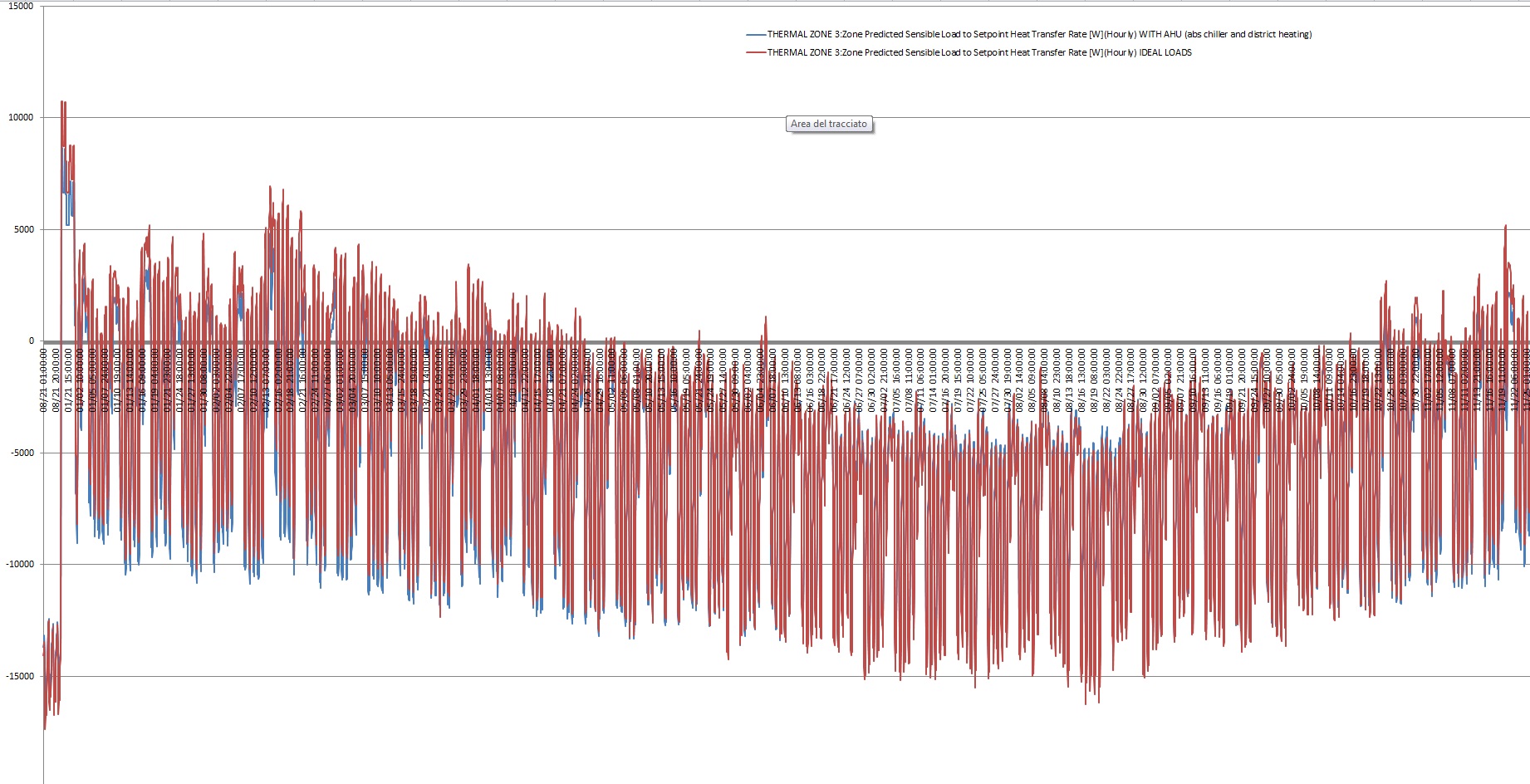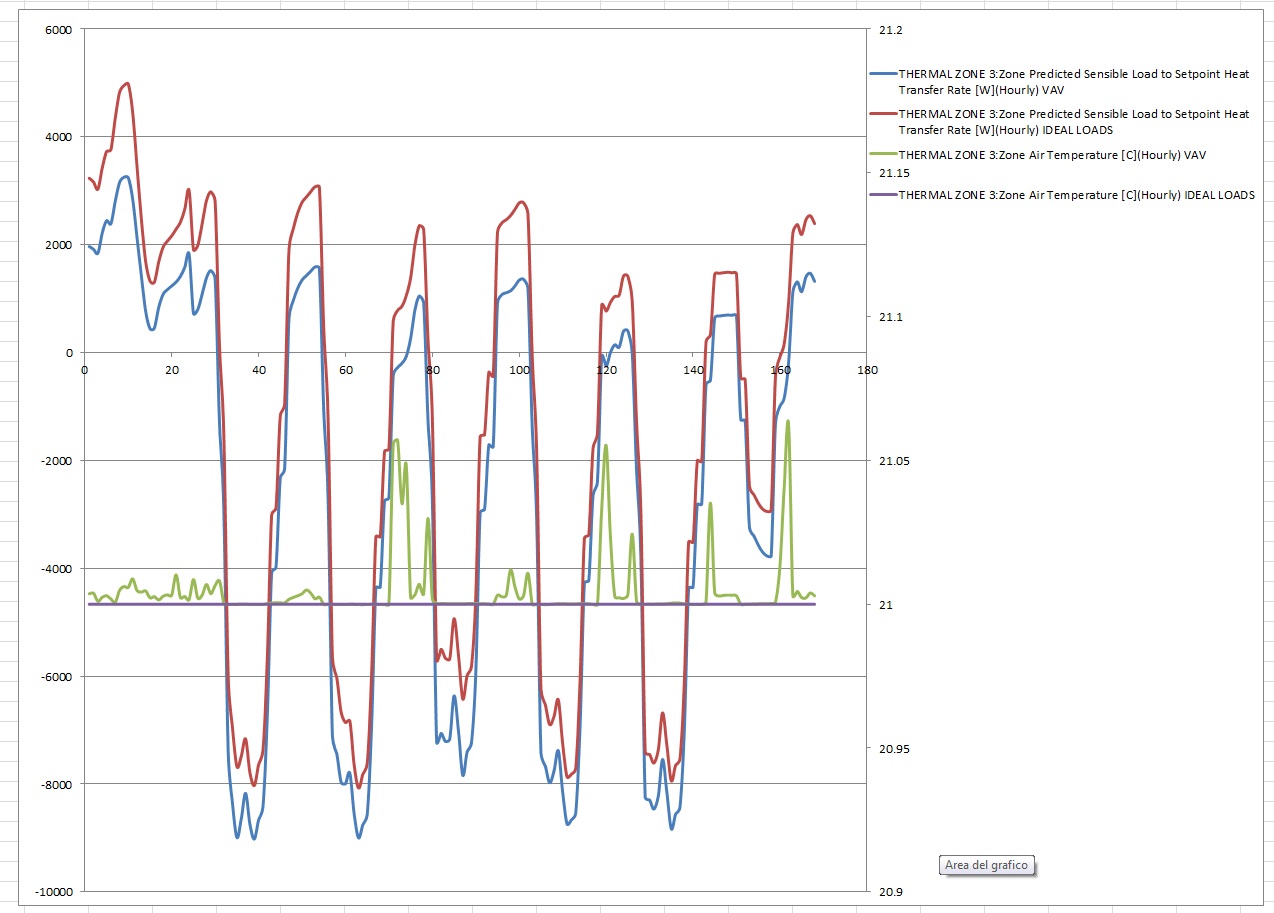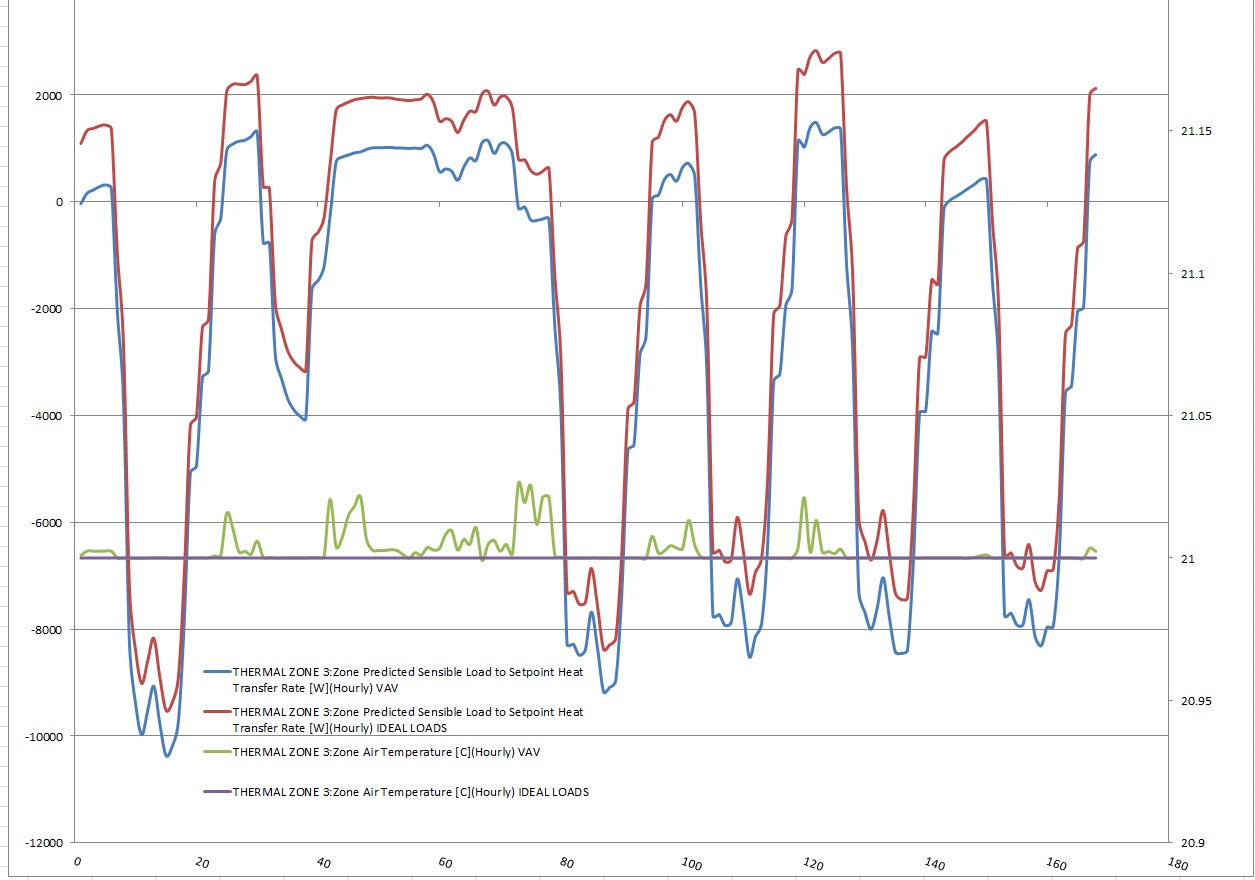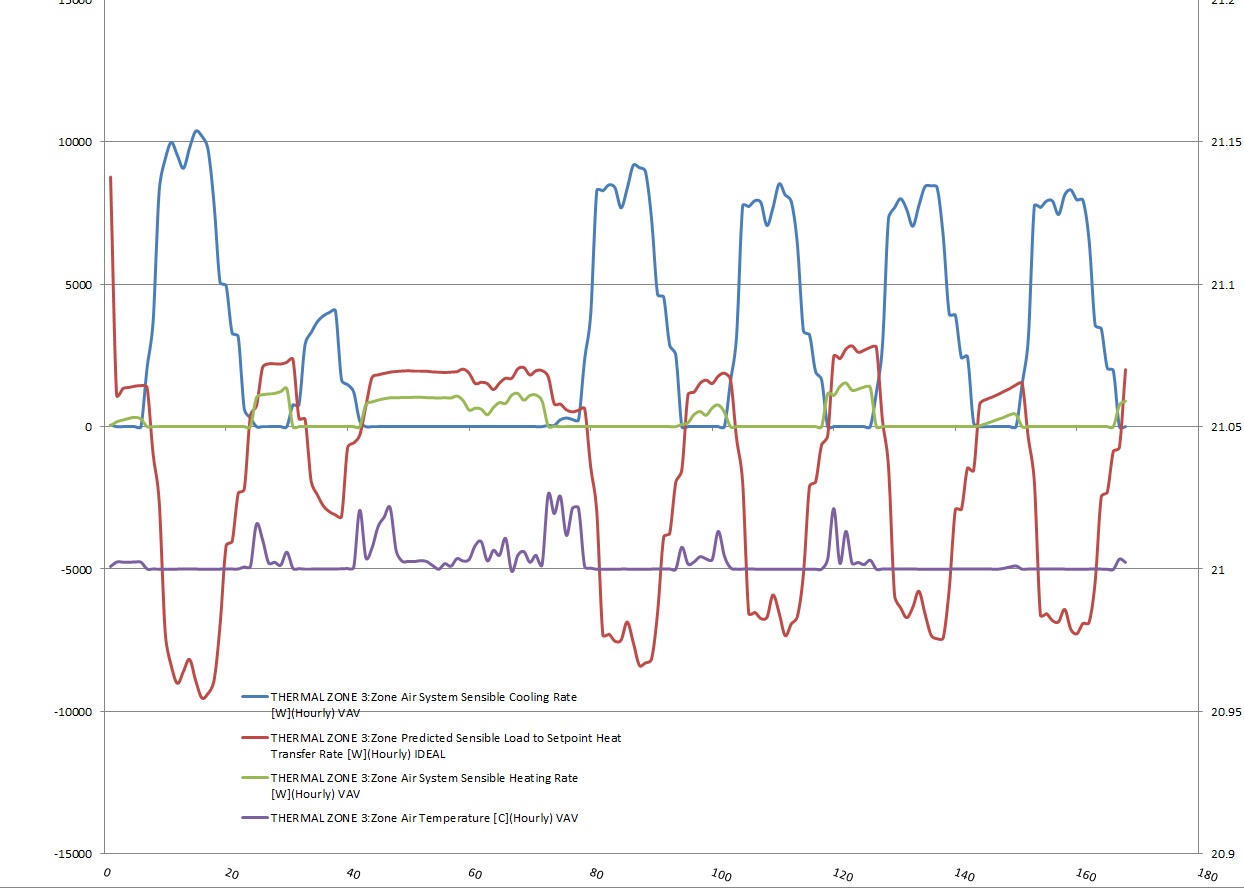Energy plus results interpretation [closed]
Hi guys, I have used E+ to obtain the output variable Zone Predicted Sensible Load to Setpoint Heat Transfer Rate for both a system connected to a modified VAV with reheat system (with absorption chiller and district heating instead of electric chiller and boiler) and the same system with the "ideal loads" turned on. The system is a simple room, so only 1 thermal zone is modeled. The percentual difference between the two values varies very much: from a simple 1-2% to 500% or more. My question is, since the room is the same (same geometry, fenestration, thermostats, internal loads, weather file and so on) shouldn't the results be very similar? Why there is this huge variability among the two results?
Thanks Federico
edit: I post the pic required

edit: here is the second graph (Revised version)

edit: I have added the plots for sim from 1-2-16 to 7-2-16, both thermostats set at 21 °C

edit: Added the plot requested







These simulations look very similar. To help understand what is happening, plot only 1 week and include the zone temperatures (not set point) for each. Plot load on the primary Y axis and zone temperature on the secondary Y axis.
There is a large difference in zone temperatures which explains the large percentage differences in zone predicted load. Are you sure that both simulations are using a constant 21C thermostat set point temperature?
The revised version of the second graph shows much better control of zone temperature. The VAV model cannot quite hold a 21C thermostat set point temperature. The higher zone temperature causes more energy storage in the construction materials (thermal history) which results in less need for heating and more need for cooling, as your revised figure shows.
Try running an ideal loads simulation with the thermostat set point temperature = 21.02C (average zone temperature of the VAV model) to see if the predicted load lines up.
I have just completed the simulation with ideal loads and thermostat setted to T=21.02 °C. The difference between the two charts is minimal, first values are: -predicted load with ideal loads (T=21 °C) = 3233.904311 W -predicted load with ideal loads (T=21.02 °C) = 3254.634677 W